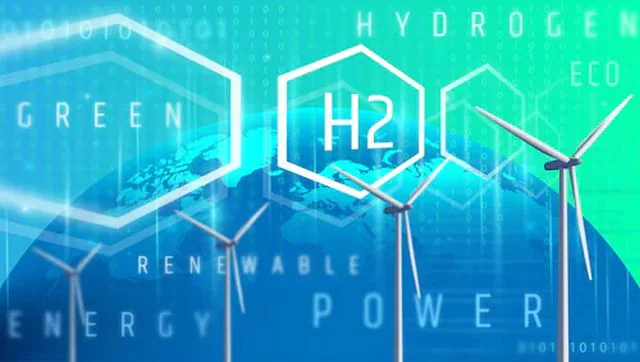India made a big splash in the hydrogen ecosystem by announcing its Green Hydrogen Policy in February 2022

Representational image. Pixabay
Immediately after the Central government committed to the target of reaching net-zero emissions by 2070, there was an administrative hustle to create an enabling policy framework. High crude prices are also pushing us to this green transition. However, a transition of this scale can only be brought about through cooperation and partnership both within the country and between countries.
In February 2022, India made a big splash in the hydrogen ecosystem by announcing its Green Hydrogen Policy. The policy takes ahead the vision articulated by Prime Minister Narendra Modi on 15 August, 2021, to make India the global hub for the production and export of Green Hydrogen. The policy lays out incentives for investors to use this new age fuel and gradually move away from traditional sources of energy. To accelerate these efforts, Indian PSUs and private entities are coming together to develop the green hydrogen sector in the country. Recently, state-run NTPC inked a pact with Gujarat Gas Ltd for an initiative to blend green hydrogen with piped natural gas.
In another development, Indian Oil Corporation, Larsen & Toubro, and ReNew Power signed a binding term sheet to set up a joint venture company to develop the green hydrogen sector in India.
While India stands on the cusp of hydrogen-driven innovation, many countries are established powers in the field and are working on large mandates. To make a dent, Indian firms will have to be purposeful, nimble, and fast.
Here is a snapshot of the progress made by some countries in the development of hydrogen to make this point. As part of its economic strategy, the government of the United Kingdom released its Ten Point Plan for a Green Industrial Revolution in November 2020. British prime minister Boris Johnson recently said he wants to double down on their renewable efforts to weaken the Russian monopoly over traditional energy. The government of the UK has already set the foundation and a roadmap to meet its ambition for 5GW of low carbon hydrogen production capacity by 2030. According to the government, it will be the equivalent of replacing natural gas powering around three million British homes each year as well as powering transport and businesses, particularly heavy industry. A booming hydrogen economy could be worth 900 million pound sterling and create over 9,000 high-quality jobs by 2030.
Interestingly, even oil giants like the UAE and Saudi Arabia are hailing green energy. Through its Energy Strategy 2050, UAE has set clear goals of increasing the contribution of clean energy in the total energy mix from 25 per cent to 50 per cent and reducing the carbon footprint of power generation by 70 per cent. In November 2021, the UAE also announced the construction of “the first green hydrogen plant in the Middle East.
It may be synonymous with oil, but the Kingdom of Saudi Arabia recognizes the significance of a green tomorrow. The Kingdom has run several sustainability programmes under its Saudi Green Initiative and Middle East Green initiative. Saudi Arabia has set a hydrogen production target of 3 million tonnes per year by 2030 and 4 million tonnes per year by 2035. Several plans are being put in place by the authorities to help Saudi Arabia become a global leader in hydrogen production. NEOM is planning to produce its first batch of hydrogen by 2025. Saudi Aramco too inaugurated its first hydrogen fueling station in Dhahran in 2019. In 2020, Aramco began the production and shipment of blue ammonia to Japan, making it the world’s first blue ammonia supply-chain demonstration. This shift can make a significant contribution to the kingdom’s achievement of energy goals under Vision 2030.
China, the world’s largest energy consumer, has recently set a target to produce up to 200,000 tons per year of carbon-free green hydrogen by 2025. It currently produces 33 million tons of hydrogen a year, about 80 per cent of which is generated using coal and natural gas, and the rest is mainly a by-product from industrial sectors.
While India has just stepped into the ring, we must realise that hydrogen can make a profound difference if pursued with utmost diligence. This fuel can help us develop sustainably helping us meet climate commitments. Countries are investing a great deal of time and resources into planning and implementing renewable energy strategies, but climate change and global warming persist. They necessitate urgent and coordinated global action. The success of these initiatives hinges on meaningful cooperation between countries. There is a dire need for advanced economies to do more to help smaller and developing ones adopt often expensive green solutions. Such an approach would accelerate innovation and truly drive broad-based sustainable development.
The author is Dean, Professor & Head, Environment Studies, Central University of South Bihar. Views are personal.
Read all the Latest News, Trending News, Cricket News, Bollywood News,
India News and Entertainment News here. Follow us on Facebook, Twitter and Instagram.










